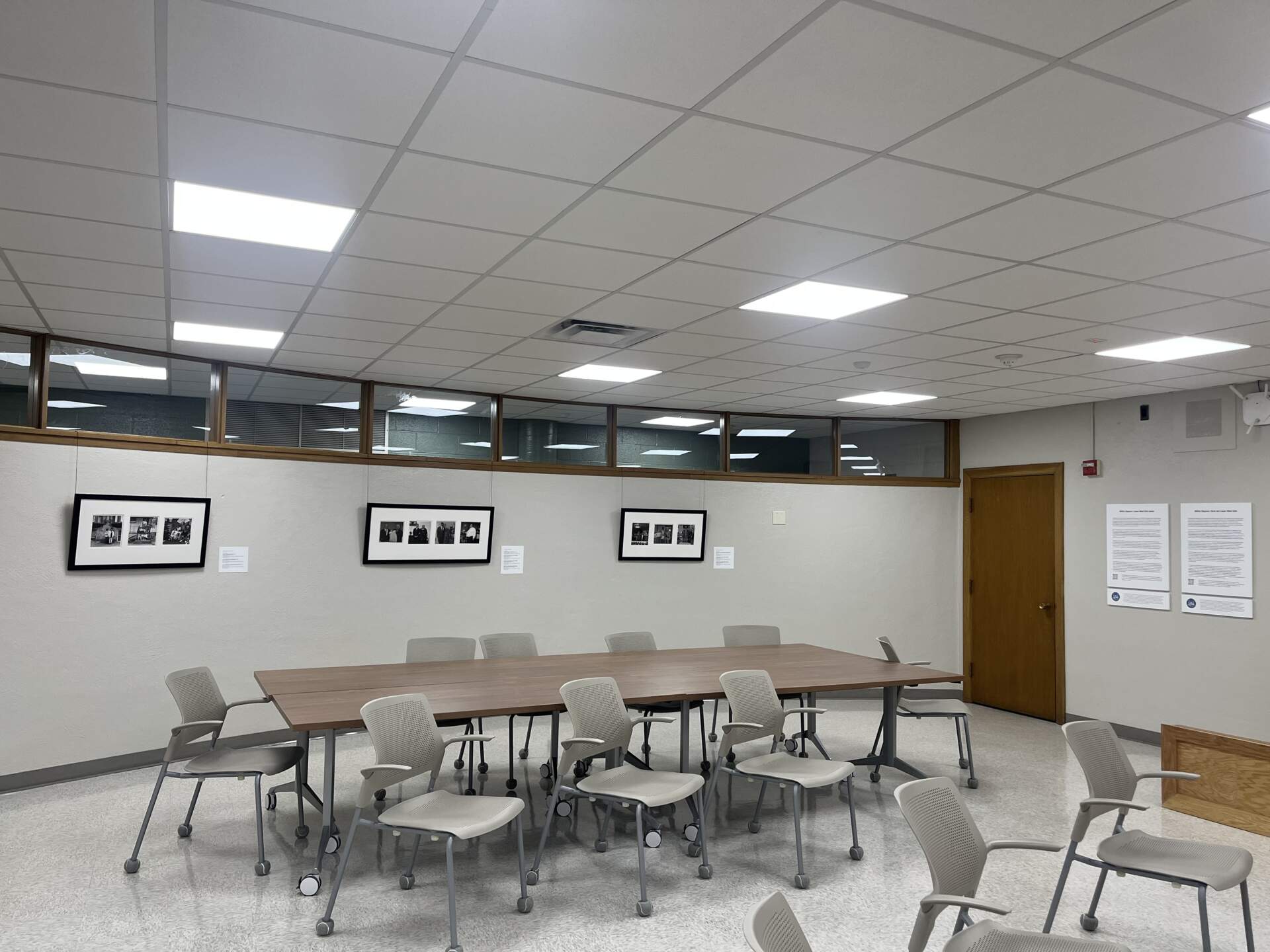
Milton Rogovin: Lower West Side Series
At the Isaías González-Soto Branch Library
Past
Mar 10, 2025 - Aug 30, 2025
Lauded social documentary photographer Milton Rogovin’s (1909-2011) expansive body of work spans countries and continents throughout his career of more than 50 years. Photographing subjects ranging from factory workers to miners to everyday working-class families, his work brings a compassionate, dignified lens to society’s most overlooked communities. The Lower West Side Series, represented in this exhibition at the Isaías González-Soto Branch Library, was his most celebrated and recognized work that documents the changes in a small radius within the neighborhood over a span of 30 years.
Born in 1909 in New York, Rogovin graduated from Columbia University in 1931 with a BS in optometry. He moved to Buffalo in 1938. Rogovin’s early interest in social justice issues like economic inequality and its impact on the working class became the driving force of his photography. In 1942, he established his own optometry practice, married his lifetime partner Anne Snetsky, and purchased his first camera before being inducted into the US Army. Discharged in 1945, he returned to his practice in Buffalo and started a family.
Rogovin’s political activism supporting social causes resulted in him being called before the House Committee on Un-American Activities in 1957, where he refused to testify. The experience impacted his business and family, and he picked up his camera a year later, using photography to call for a more equitable society. His commitment to photographing everyday working people, the “forgotten ones,” as he called them, highlighted their reality, and the beauty of their humanity in their work and home lives.
In 1972, Rogovin began photographing West Side residents after being invited to visit one of his patient’s homes, beginning a decades-long series. He and Anne visited the West Side on weekends, meeting and photographing people at home and throughout the neighborhood. Rather than documenting people at their lowest and most vulnerable, he created space for his subjects to be photographed on their terms, giving them a voice in the creative process. As a result, “we see them as they see themselves, and Rogovin demands we acknowledge them.”[1]
Revisiting the same people every ten or so years, the triptychs and quartets mark the passage of time and the biography of individuals, families, and communities. Some show the expansion of families, each portrait growing in the number of generations represented. Others pointedly mark the absence of those who have passed. While some subjects appear as if they’ve barely aged, the environments around them remind us that nothing stays the same. While people, homes, and neighborhoods inevitably change, what remains central to Rogovin’s photographs is a respect for individuals, families, kinship, and the richness of the human spirit.
Milton Rogovin: Lower West Side Series is from the Burchfield Penney Art Center collection and is presented by the City of Buffalo with support from the Office of Assemblymember Jon D. Rivera

[1] Robert J. Doherty, “Introduction,” in The Bonds Between Us: A Celebration of Family, (Buffalo, NY: White Pine Press, 2001), 12.